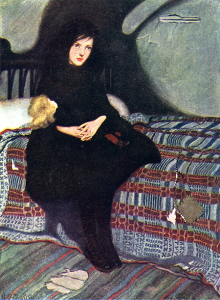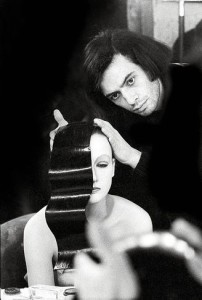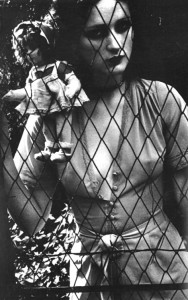Illustration for A Little Princess by Ethel Franklin Betts
When I was a child I had a painting of a girl with sad dark eyes that followed you around the room. You could tell just by looking at her that she had no mother, a fate that in Edwardian literature was common; young girls huddled in doorways begging for crumbs or in a rat-infested attic like Sara Crewe of Frances Hodgson Burnett’s “A Little Princess.”
Samantha Barks as Éponine in Les Miserables
When I grew older I understood that the concept of orphan didn’t have to be literal– it meant being alone. Éponine from Les Misérables may have had parents, but when she stood in the rain singing “On My Own” and then sacrificed her life for Marius to ensure that her love for him had meaning, she was more of an orphan than Cosette at her lowest point.
Serge Lutens, 1972, Le Monde Magazine
Serge Lutens, who is arguably among the most widely recognized names in niche perfumery, experienced the literal version of this fate when he was separated from his mother as an infant during World War II. Although the press materials for the line’s newest release, L’Orpheline, are typically surreal and opaque (“Before the break, the first two syllables are named after the poet who could charm even the stones"; could that be Orpheus?), one gathers from both the name of the fragrance and the journey perfumer Christopher Sheldrake presents that Lutens has healed the resulting psychic pain through self-expression in his art.
Isabelle Weingarten for Vogue Italia by Manfredi Bellati, 1973
Although notes for the fragrance are not officially listed, (I have read musks and incense on the Serge Lutens Facebook page and Parfum1.com lists: Aldehydes, woods, Fougere accord, patchouli, incense, musk, among others) it opens with aldehydes reminiscent of the mist in which Éponine sings her swan song. Chilly and lonely with a natural-smelling musk underneath like the contrast of warm flesh with the rain, the opening is sweetened by coumarin. I am reminded of one of the best scenes in “A Little Princess,” in which a starving Sara Crewe uses a gold coin tossed at her as charity to purchase a hot cross bun and then shares it with a beggar girl even more unfortunate than she.
But L’Orpheline isn’t a melancholy fragrance throughout. Sara Crewe sustains herself through hard times with her imagination (pretending to be a prisoner in the Bastille), just as “Uncle Serge” did through his work as a hair stylist, photographer, filmmaker and creative director. Cashmeran evokes the clean, orderly home she longs for and eventually gets, while a sweet labdanum reminds one of the cheery fire and generous repast Ram Dass surprises her with in her attic “prison.” Incense in the form of olibanum and myrrh hint at answered prayers. In the end, L’Orpheline is almost gourmand, and is a highly wearable Oriental that is more Sara Crewe than Éponine; it offers a happy ending, albeit one sobered by the suffering that has gone before.
L’Orpheline Logo/Les Miserables Musical Logo
L’Orpheline was introduced in Europe in July and is available at Twisted Lily in Brooklyn in the U.S., at $150 for 50 ml. Thanks to the generosity of Eric and Stamatis, we have three generous samples available for three U.S. readers. To enter, please comment which is your favorite Serge Lutens fragrance and why you would like to try L’Orpheline.
Disclosure: Review based upon sample provided by Twisted Lily
— Nancy Lichtenstein, Deputy Editor and Beauty Editor
We announce the winners only on site and on our Facebook page, so Like Cafleurebon and use our RSS option…or your dream prize will be just spilled perfume.





